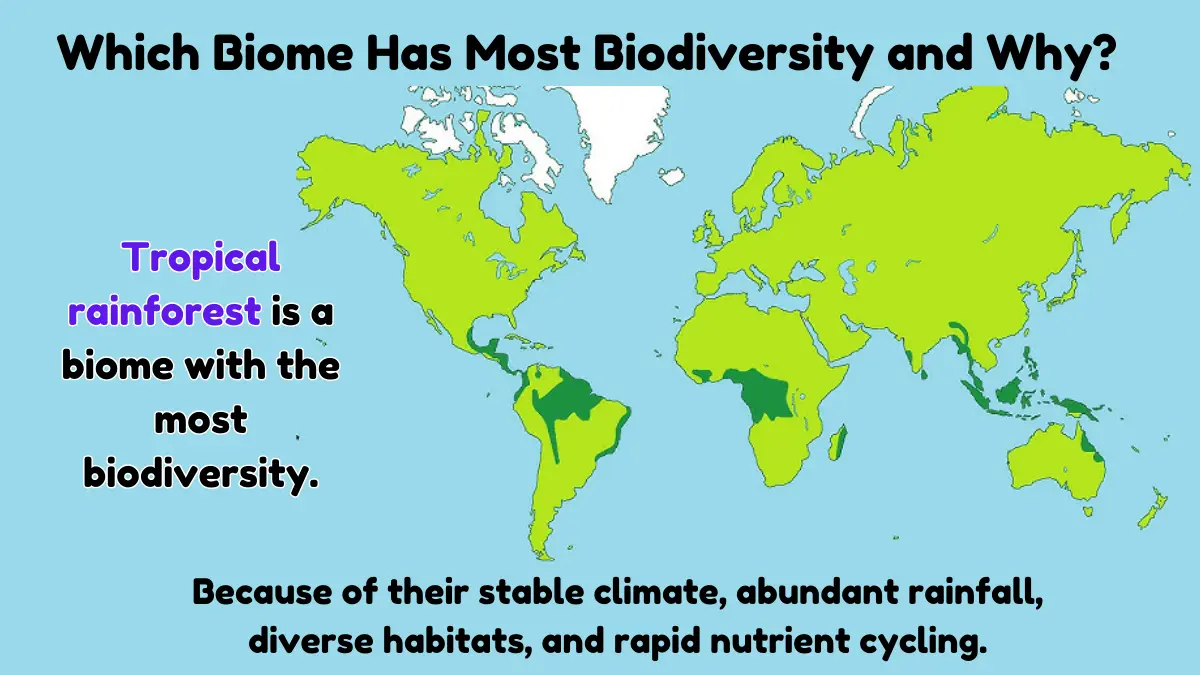Population Density (Formula, Types, and Factors)
Population density is the number of individuals of a particular species that live in a specific area or volume. It is typically measured in terms of individuals per square kilometer (km²), per square mile (mi²), or per cubic meter (m³).
How to Calculate Population Density?
Population density is calculated by dividing the number of individuals of a species in a particular area or volume by the area or volume of that location.
Population Density Formula
The equation for calculating population density is as follows:
Population Density = Number of Individuals / Area or Volume
For example, let’s consider the following scenarios:
- If there are 500 oak trees in a 1 km² forest, we can calculate the population density of oak trees as follows:
Population Density = 500 individuals / 1 km² Population Density = 500 individuals/km²
2.There are 1,000 fish in a 100 m³ lake. To calculate the population density of fish in that lake, we use the equation:
Population Density = 1,000 individuals / 100 m³ Population Density = 10 individuals/m³
Types Of Population Density
Here are 5 types of population density:
1. Arithmetic Population Density
This is the most basic type of population density, which is calculated by dividing the total population of an area by its total land area. It provides a general overview of population distribution.
2. Physiological Population Density
This type of density studies distribution of population in relation to available agricultural land. It is calculated by dividing the total population by the arable land area, providing insights into the population’s dependence on agricultural resources.
3. Agricultural Population Density
This type of population density focuses specifically on the number of agricultural workers per unit of arable land. It provides information about the labor force involved in agricultural activities within a given area.
4. Urban Population Density
This type of density measures the concentration of population in urban areas. It is calculated by dividing the population living in urban areas by the total urban land area, providing insights into the level of urbanization and population concentration.
5. Rural Population Density
This density focuses on the population residing in rural areas. It is calculated by dividing the rural population by the total rural land area, providing insights into the distribution of population outside of urban centers.
Factors Affecting Population Density
Population density can be influenced by various biotic and abiotic factors that regulate the growth and distribution of organisms. Some of the primary factors include:
1. Availability of Resources
The availability of resources such as food, water, shelter, and space can significantly influence population density. The more resources available, the higher the population density can be.
2. Predation:
The presence of predators can control population density by preying on individuals and regulating population growth.
3. Competition:
Competition for resources can limit population density by reducing the availability of resources and leading to a decrease in population growth.
4. Disease
Disease outbreaks can impact population density by killing off individuals and reducing the population’s overall size.
5. Migration
Migration can affect population density by introducing or removing individuals from a particular area, thus altering the population’s size and distribution.
Population Density Top 10 Countries by Population Density
| Rank | Country or Dependent Territory | Land Area (km²) | Population | Density per km² |
|---|---|---|---|---|
| 1 | Macau (China) | 30.5 | 650,834 | 21,339 |
| 2 | Monaco | 2.02 | 37,550 | 18,589 |
| 3 | Singapore | 719.9 | 5,612,300 | 7,796 |
| 4 | Hong Kong (China) | 1,106.3 | 7,409,800 | 6,698 |
| 5 | Gibraltar (UK) | 6.8 | 33,140 | 4,874 |
| 6 | Bahrain | 757 | 1,451,200 | 1,917 |
| 7 | Vatican City | 0.44 | 800 | 1,818 |
| 8 | Malta | 315 | 475,701 | 1,510 |
| 9 | Maldives | 298 | 378,114 | 1,269 |
| 10 | Bermuda (UK) | 52 | 63,779 | 1,227 |
Note: Population density is represented per square kilometer (km²). [Reference]
FAQs
What is meant by population density?
Population density refers to the measure of how many individuals are present in a given area or region.
What are the 5 types of population density?
Here are 5 types of population density:
Arithmetic Population Density
Physiological Population Density
Agricultural Population Density
Urban Population Density
Rural Population Density







Leave a Reply